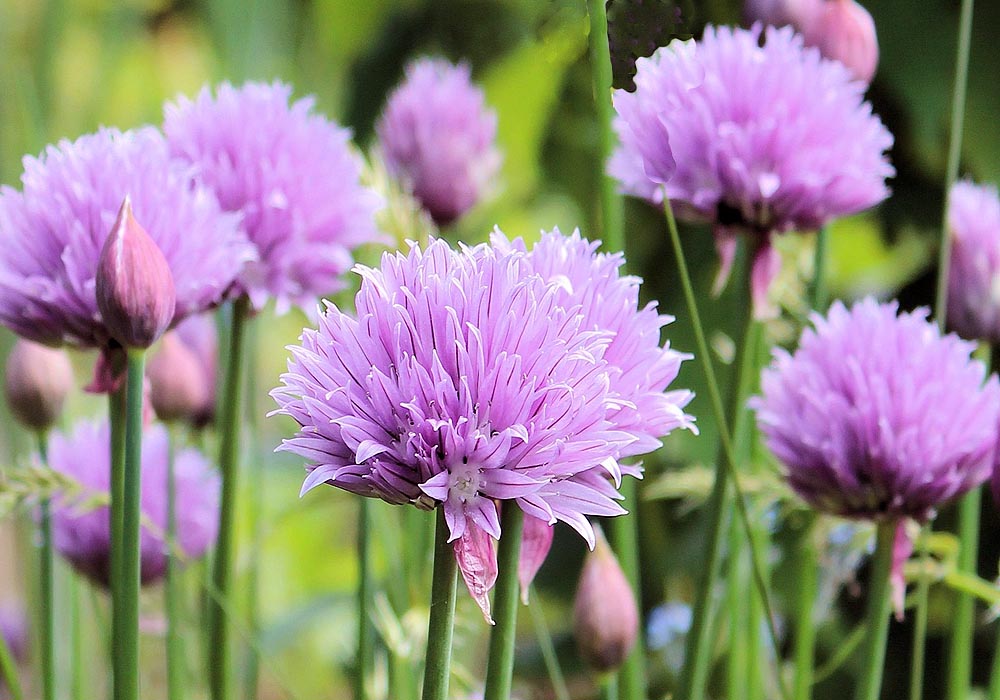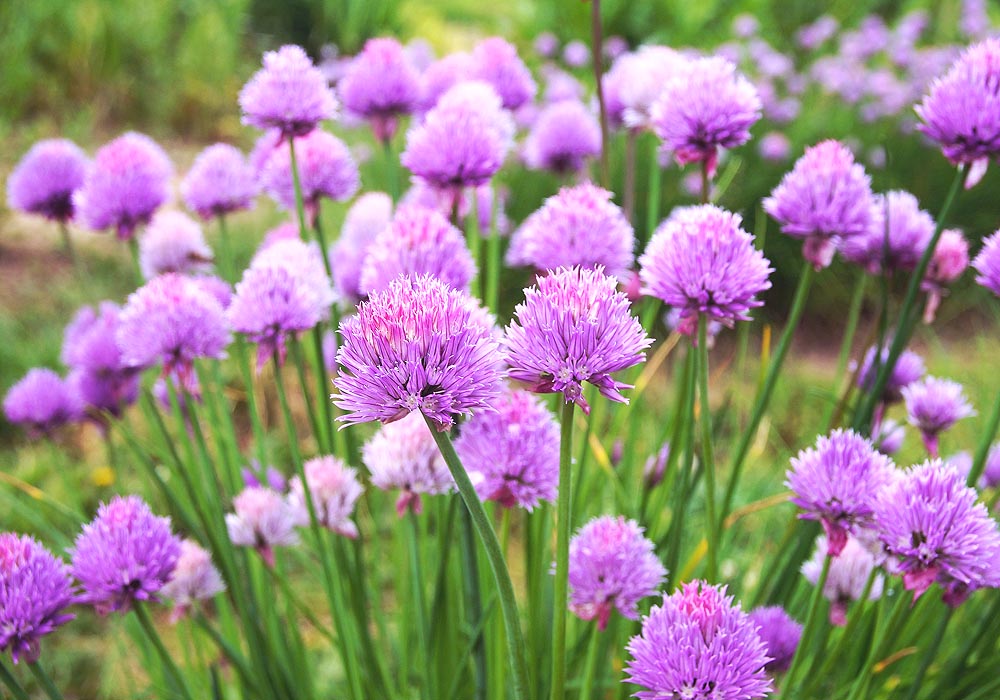The delicate flavor of chive leaves has made it a favorite in the kitchen of many a chef but its also good because its so easy to grow. Its a perennial hardy to zone 3 and comes back every year. The lovely pink flowers that appear in profusion in late spring are also edible or they make great cut flowers and last a long time. The leaves can be cut for most of the growing season and the little blubs are also edible although a little fiddly to clean. Chives can be used in either the vegetable garden or in the flower border since the flowers are so delightful and the leaves make a good ground cover amidst shorter plants. It can also be grow in deck pots or even as a house pot plant for year round chives. Likes full sun and well drained soil will die back in areas where winters are cold but remain in warmer areas. An excellent starter plant for those just starting out with gardening since its so easy to grow and take care of.
Indoors. best started in small pots with 2-5 seeds in each. Place in good light and allow to grow strong. After hardening off they can be transplanted to the garden or moved to a larger pot and used as either an indoor plant or on the deck.
Outdoors. Prepare the bed well and remove all weeds. Sow 2-3 seeds together about 6-8 inches (15.2-20 cm) apart. Ensure you label the area well as its easy to mistake new chives for weeds. Keep the area weed free until the plants are large enough to outgrow the weeds.
While chives are not really fussy about the soil type and will grow on almost any soil that is well drained it is best to give it some TLC at the beginning. This is a perennial plant so it wont get much around its roots after it has been planted. Thus adding a good amount of well rotted compost (or compost from a purchased bag) to the soil before you plant is best. This is going to have to sustain the plant from now on so its worth the extra effort.
Ensure that the soil is well draining. Chives cannot tolerate wet soil or standing water it will rot the roots.
Light requirements. Chives are a very versatile plant growing from zone 9 all the way to zone 3. However the light requirements will differ. In zones 6 and colder full sun is necessary the stronger the better the further north you go. Zones 7 and warmer will need to add some shading during the hottest parts of the day, so an area that gets morning or afternoon sun but some shade at noon would be best.
Water requirements. Again this will depend on zone. Cooler zones chives are very hardy and need a lot less water and can even be fairly drought tolerant. In hotter zones daily watering will be needed if cutting for the kitchen. The leaves are soft and pliable and easily transpire so they need a lot of water to sustain them. Plants in hot zones can become dry floppy with the ends of the leaves turning brown without sufficient water. While they are mostly drought tolerant in all zones they will die back if there is not sufficient water and rely on their bulbs to allow them to regrow. However if the area is prone to drought the bulbs will only sustain them a certain amount without extra water and they will eventually die. In other areas plants will regrow once the water returns.
Spacing. start by setting plants out around 6-10 inches (15.2 -25.4cm) apart, but remember the plants will grow into clumps and form one continuous line or block depending on how planted. done right they can usually beat out most weeds once they have established themselves. The may need digging up and dividing after several years if they start to overgrow the area designated for them.
While chives are usually planted in the vegetable or herb garden the delightful flowers make them a good choice for any flower garden and make a good border plant since they can beat out most of the weeds once they are established and get sufficient water. In cooler zones if the flowers are cut down after blooming is done they will often grow a new set of flowers and this process can be repeated until autumn. In warmer zones (6+) they do not rebloom.
If used as in indoor pot plant they will need a sunny south facing window in most zones above 7b warmer zones can usually handle a east or west facing window.
Pollinator and Wildlife with Chives (Allium schoenoprasum).
Many species visit the flowers that are high in pollen and nectar. As well as the leaf miner some thrips and aphids may attack the plants but mostly they are left alone. Wildlife don't eat them due to the onion flavor.
Once the plants are established, second year onwards the leaves can be harvested from 6 inches (15cm) height and harvesting can continue all through the growing season. If located in a cooler zone and want a second bloom of flowers resist harvesting, a few leaves per plant can be cut but flowers wont appear if you cut the whole plant down.
Blubs are also edible and can be harvested by digging up at any time during the growing year but should be left until the second year onwards. An idea way to harvest is to gradually remove those plants that are overcrowding the others or moving outside the area allocated for them. This way you keep a sustainable population.
Flowers. Can be used either as buds or in full bloom and are excellent added to salads or as a garnish with the same mild flavor as the leave but a lot more color.
Bulbs. Are rather small and can be fiddly to prepare washing off all the dirt and pealing away the top leaves. They have a much stronger flavor than the leaves somewhere between Garlic Chives (a stronger form of chives and often preferred) and garlic itself. Can be used in all kinds of dishes where you would use garlic but want a milder flavor.
It has been cultivated in Europe since the Middle Ages, both for culinary and medicinal purposes, and as long as 4,000 years ago by the Chinese.







